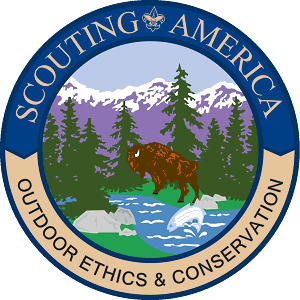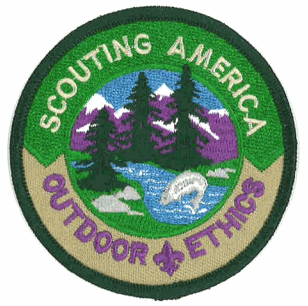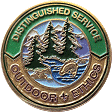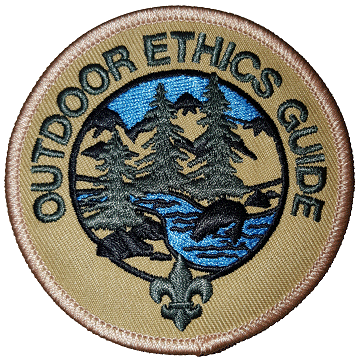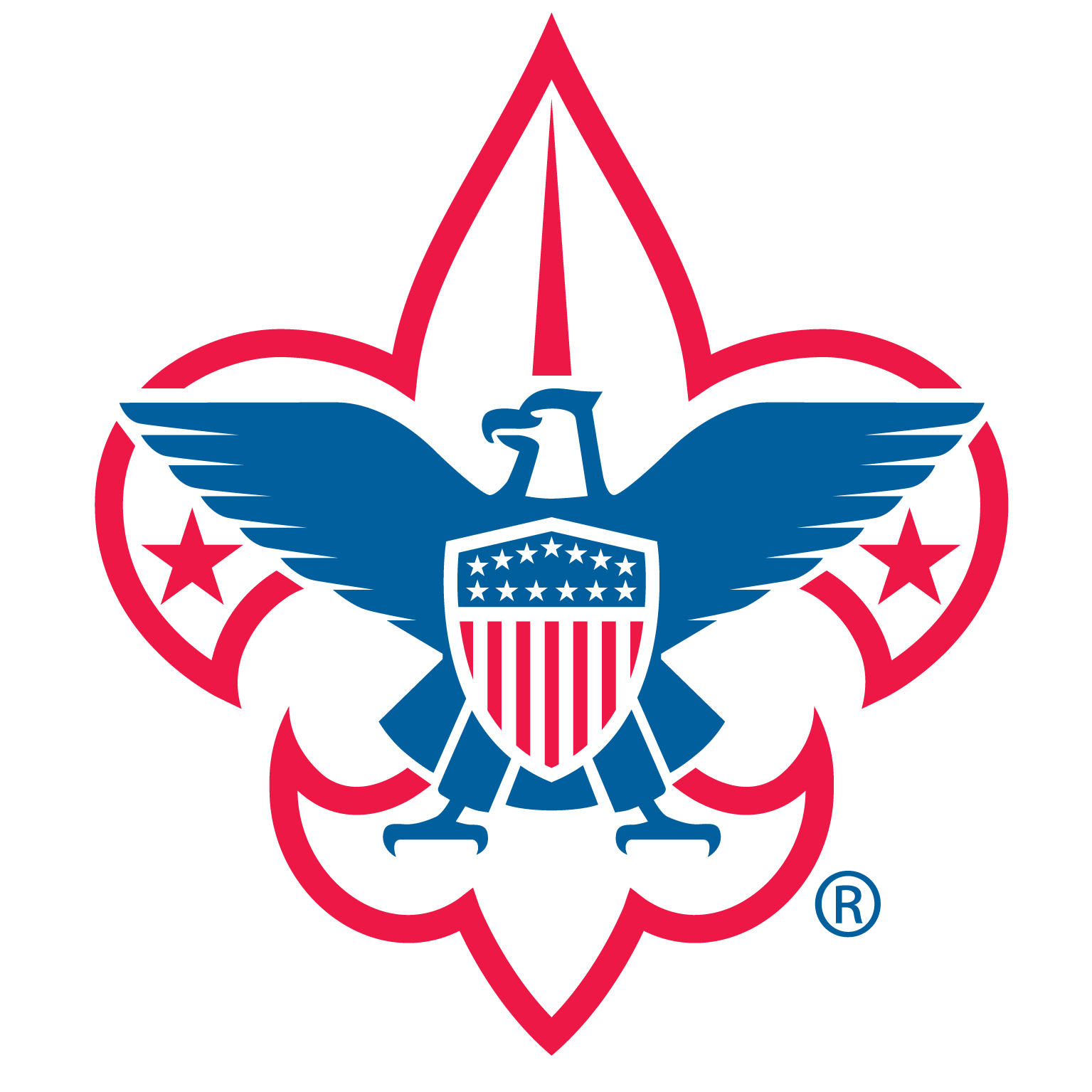Outdoor Ethics and Leave No Trace
Latest News
This weekend course for individuals, ages 18 and up, who wish to guide units in developing a culture that effectively demonstrates responsible outdoor choices that reduce impacts of Scouting activities. It will also develop and expand the knowledge of Leave No Trace principles and skills. The course will provide Sea Scouts, Venturers, Scouters, and Commissioners that successfully complete course requirements with recognition as a Leave No Trace Instructor (Level 1) in Scouting America and the Leave No Trace (www.LNT.org) organizations.
Participants need to bring camping equipment, Annual Health and Medical Record (AHMR, Parts A, B1, and B2), and note-taking materials. Meals and course materials are included in the registration fee. Learn more and register online at https://mycouncil.danbeard.org/Event/14801.

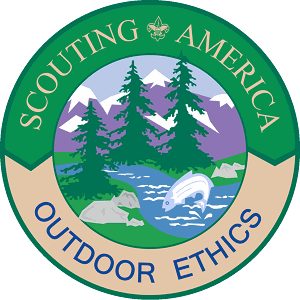
The Dan Beard Council (DBC) Outdoor Ethics and Leave No Trace committee is actively creating and offering opportunities for our Scouts and Scouters.
Please take a moment to complete a survey so that we can improve the Outdoor Ethics and Leave No Trace program in Dan Beard Council. This survey can also be used to engage the committee to conduct a training session.
Table of Contents
Outdoor Ethics Overview
Outdoor Ethics directly contributes to two of the three Scouting America missions and indirectly to one:
- Build character – Being clean in the outdoors, careful with fire, conservation minded and considerate of people and wildlife are all character building activities.
- Learn citizenship – an integral part of citizenship and civic responsibility is being clean in outdoor manners and making the world a better (cleaner) place.
- Develop personal fitness – Outdoor Ethics can help develop and improve personal fitness when the activities to earn the Outdoor Ethics award involve hiking, canoeing, kayaking or other physical activity.

From a Cub Scout’s first hike in a local park to the thrill of our High Adventure bases, from our backyard to the backcountry, our outdoor ethics guide us to be responsible outdoor citizens — protecting our natural world for generations to come and being considerate of other visitors. Scouting has a long, proud tradition of conservation service to the nation. How do we maintain our outdoor ethics and preserve that tradition? By heeding the challenge in the Outdoor Code.
Outdoor Code
As an American, I will do my best to—
- Be clean in my outdoor manners.
- Be careful with fire.
- Be considerate in the outdoors.
- Be conservation-minded.
Building upon this foundation, the Cub Scout, Scouts BSA, Venturing, and Sea Scout programs all include outdoor stewardship, care for the environment, and Leave No Trace (LNT) as part of their programs. At the Boy Scout and Varsity Scout levels, youth are encouraged to take leadership positions in encouraging proper outdoor ethics using the principles of Leave No Trace. Many Venturing crews have similarly adapted Leave No Trace principles to guide their outdoor recreation activities. Through the Outdoor Code and Leave No Trace, we can take responsibility for our own impacts. We can provide leadership to those around us to reduce their impacts by making good choices. Together, we can preserve and conserve our rich environmental heritage.
Leave No Trace Principles
- Plan Ahead and Prepare
- Travel and Camp on Durable Surfaces
- Dispose of Waste Properly
- Leave What You Find
- Minimize Campfire Impacts
- Respect Wildlife
- Be Considerate of Others
Scouts and Venturers who embrace the Outdoor Code and the principles of Leave No Trace often find that they wish to give back and help protect the environment that has given them so much. Some may find that they are “wild with love for the green outdoors—the trees, the tree-top singers, the wood-herbs, and the nightly things that left their tracks in the mud,” in the words of Ernest Thompson Seton, the first Chief Scout. These Scouts and Venturers have begun to feel what Aldo Leopold called the “Land Ethic.” The Land Ethic extends our concern beyond our fellow Scouts and Venturers, our families and friends, and even humanity itself to the entire environmental community of which we are a part—the deserts, forests, fish, wildlife, plants, rocks, oceans, and web of life encompassing them—what Leopold called “the Land.”
Land Ethic
A thing is right when it tends to preserve the integrity, stability, and beauty of the biotic community.
It is wrong when it tends otherwise.
Scouting America has partnered with Tread Lightly! to provide specific practical outdoor ethics guidance for motorized activities.
T.R.E.A.D. Principles
- Travel Responsibly
- Respect the Rights of Others
- Educate Yourself
- Avoid Sensitive Areas
- Do Your Part
Outdoor Ethics Training
Outdoor ethics training is included in all core Scouting America outdoor training programs: National Youth Leader Training (NYLT) and National Advanced Youth Leadership Experience (NAYLE) for Scouts, and Introduction to Outdoor Leadership Skills (IOLS) and Wood Badge for all adult volunteers with outdoor leadership responsibilities.
Scouting America also offers specialized outdoor ethics and Leave No Trace training courses to assist youth and adult members seeking to bring cutting-edge outdoor ethics to their outdoor programs. These programs are summarized below.
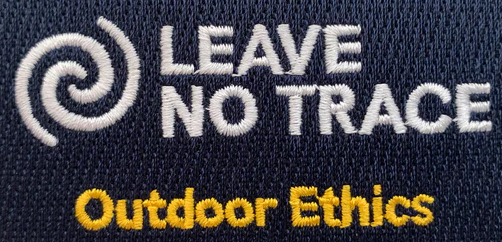
Scouting America Outdoor Ethics Orientation (S110-Youth/S111-Adult)
The goal of this course is to introduce the concept of Outdoor Ethics in a fun and engaging way to a group with little experience in outdoor ethics. It should help youth and adults at all program levels understand the general principles behind outdoor ethics in Scouting’s outdoor program.
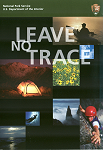
Scouting America Leave No Trace Basics (D74)
(Formerly called the BSA Leave No Trace 101 Course)
This course is a general introduction to Leave No Trace ethics and skills. The course is designed to help youth and adults at all program levels understand the Leave No Trace Seven Principles and how to apply them in the Scouting America outdoor program. It is also designed to give adult volunteers the confidence to assess youth understanding and skills for purposes of signing off on Scouts BSA rank requirements and Venturing Outdoor Bronze and Ranger Award requirements.
- Instructed by: Leave No Trace Level 1 or 2 Instructor
- Participants receive: Scouting America Leave No Trace Basics Card
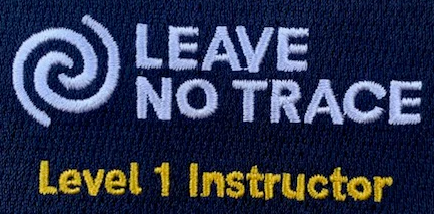
Scouting America Leave No Trace Level 1 Instructor Course (D78)
(Formerly called the Leave No Trace Trainer Course)
This 16-hour, overnight course trains interested scouts and scouters ages 14 and older to serve as Leave No Trace Level 1 Instructors. Level 1 Instructors are the backbone of Scouting’s outdoor ethics program, providing instruction to individuals and units wishing to adopt cutting-edge outdoor ethics into their unit programs. Level 1 Instructors are specially commissioned to teach the Scouting America Leave No Trace Basics course and to qualify individuals for the Scouting America Leave No Trace Awareness card. Each Scouting America Level 1 Instructors course is led by a recognized Leave No Trace Level 2 Instructors, so your Level 1 Instructors standing is recognized nationally by Scouting America’s partner, the Leave No Trace organization.
- Instructed by: Leave No Trace Level Instructors
- Participants receive: Leave No Trace Level 1 Instructor card from Scouting America, Leave No Trace Basics Course Guide, Leave No Trace Level 1 Instructor certificate from Leave No Trace, and other Leave No Trace teaching resources.Scouting America
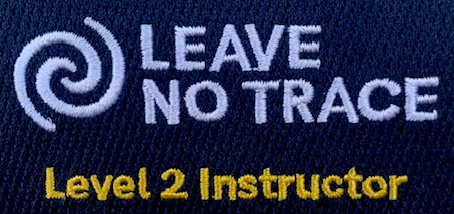
Scouting America Leave No Trace Level 2 Instructor Course (D79)
(Formerly called Leave No Trace Master Educator Course)
This five-day, five-night course trains interested individuals ages 18 and older to serve as Leave No Trace Level 2 Instructors. Level 2 Instructors work with their council’s outdoor ethics advocates to provide Leave No Trace Level 1 Instructor, Scouting America Leave No Trace Basics, and outdoor ethics awareness courses. Each Scouting America Level 2 Instructor course is taught by a set of nationally-designated Level 3 Instructors, so your Level 2 Instructor standing is recognized nationally by Scouting America’s partner, Leave No Trace.
- Prerequisite: Prior completion of a Leave No Trace Level 1 Instructor course is recommended. A person who has not previously attended a Level 1 Instructor course may be accepted with the recommendation of the council’s Outdoor Ethics Advocate or approval of the course’s Lead Instructor.
- Instructed by: Nationally designated Leave No Trace Level 3 Instructors.
- Participants receive: Leave No Trace Master Educator Handbook, Supplement to the Master Educator Handbook, Leave No Trace Level 1 Instructor Course Manual, Leave No Trace Basics Course Guide, Leave No Trace Level 2 Instructor certificate, and other Leave No Trace teaching resources.
- Partial course scholarships are available for scouters needing financial assistance in order to attend a Scouting America Leave No Trace Level 2 Instructor Course. Please see the Dan Howells Scholarship webpage for more information.
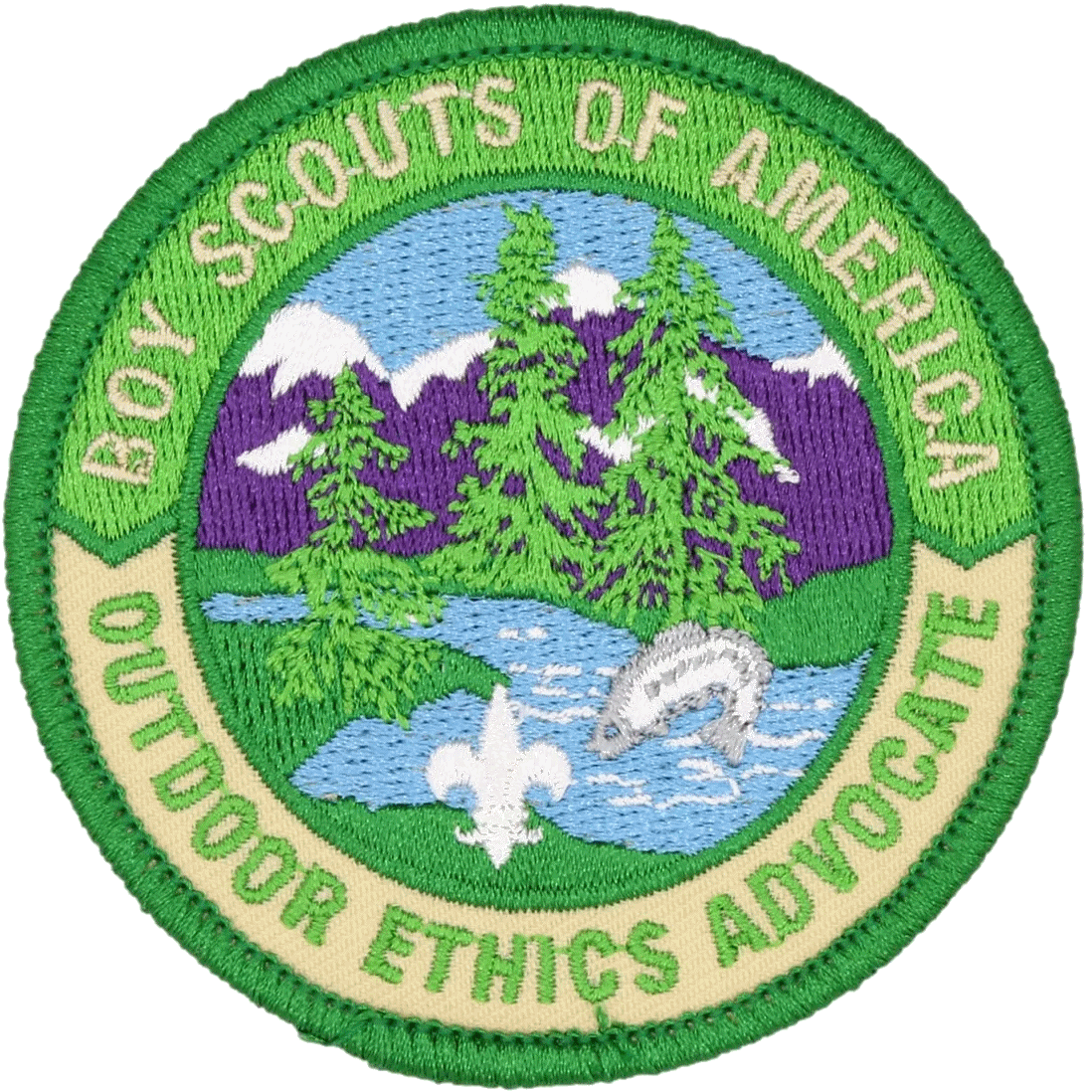
Outdoor Ethics Advocate Training
The Outdoor Ethics Advocate Workshop and Council Outdoor Ethics Advocate Training courses are taught periodically at the Philmont and Summit National Training Centers. They provide guidance to council professional staff and volunteers on implementing Scouting America’s outdoor ethics and Leave No Trace programs in the local council. They are designed for individuals serving as a council outdoor ethics advocate or interested in serving in that position.
- Instructed by: Nationally designated instructors, typically Scouting America Outdoor Ethics & Conservation Subcommittee members and successful council outdoor ethics advocates
- Participants receive: Council outdoor ethics advocate position description and copies of all Scouting America Leave No Trace implementing literature, including Scouting America Supplement to the Master Educator Handbook, Scouting America Leave No Trace Level 1 Instructor Course Manual, Leave No Trace Basics Course Guide.
- These workshops have been offered virtually, at Philmont Training Center, and at past Scouting America National Outdoor Ethics Conferences. Contact ProgramOps@OutdoorEthics-BSA.org for upcoming workshops.
Outdoor Ethics Awards
Guided by the Outdoor Code and Leave No Trace, millions of Scouts have enhanced their awareness of the natural world around them, minimizing impact to the land. For Scouts who have a deep interest in the outdoors, nature, and the environment, Scouting’s outdoor ethics will give you an ever-deeper appreciation of the richness of the land and how we fit into it. If you are prepared to venture down the path of really becoming aware of your surroundings, of building the skills that will allow you to leave no trace on the land, then the Outdoor Ethics Awareness and Action Awards are for you.
Cub Scouts
- The Scouting AmericaOutdoor Ethics Awareness and Action Awards for Cub Scouts and Cub Scout Leaders were unfortunately retired in June 2016.
- The new Cub Scouts program introduced in 2024 now includes Outdoor Ethics and Leave No Trace topics as part of the new Bobcat adventure required for every Cub Scout rank.
- Dan Beard Council is excited to offer an exclusive NEW Cub Scout Outdoor Ethics Awareness Award!
- Award patches are available for $3.00 each from the front desk at the DBC Scout Achievement Center (SAC), and $5.00 each (includes shipping) for out of council. Please contact Michelle.Byrne@scouting.org if multiple patches are needed for out of council.
Outdoor Ethics Awareness Award (for Cub Scouts in Grades K-5)
- Learn about the Scouting America Outdoor Code.
- Watch the National Park Service Leave No Trace video.
- Complete the online Leave No Trace PEAK Course (free).
- Participate in an Outdoor Ethics activity with a person who has taken the one of the following courses: Outdoor Ethics Awareness, Outdoor Ethics Orientation, Leave No Trace Level 1 Instructor, or Leave No Trace Level 2 Instructor.
- Download and complete the award application form using the button below and submit it by dropping it off at the front desk in Dan Beard Council Scout Achievement Center or submit electronically using the button below.
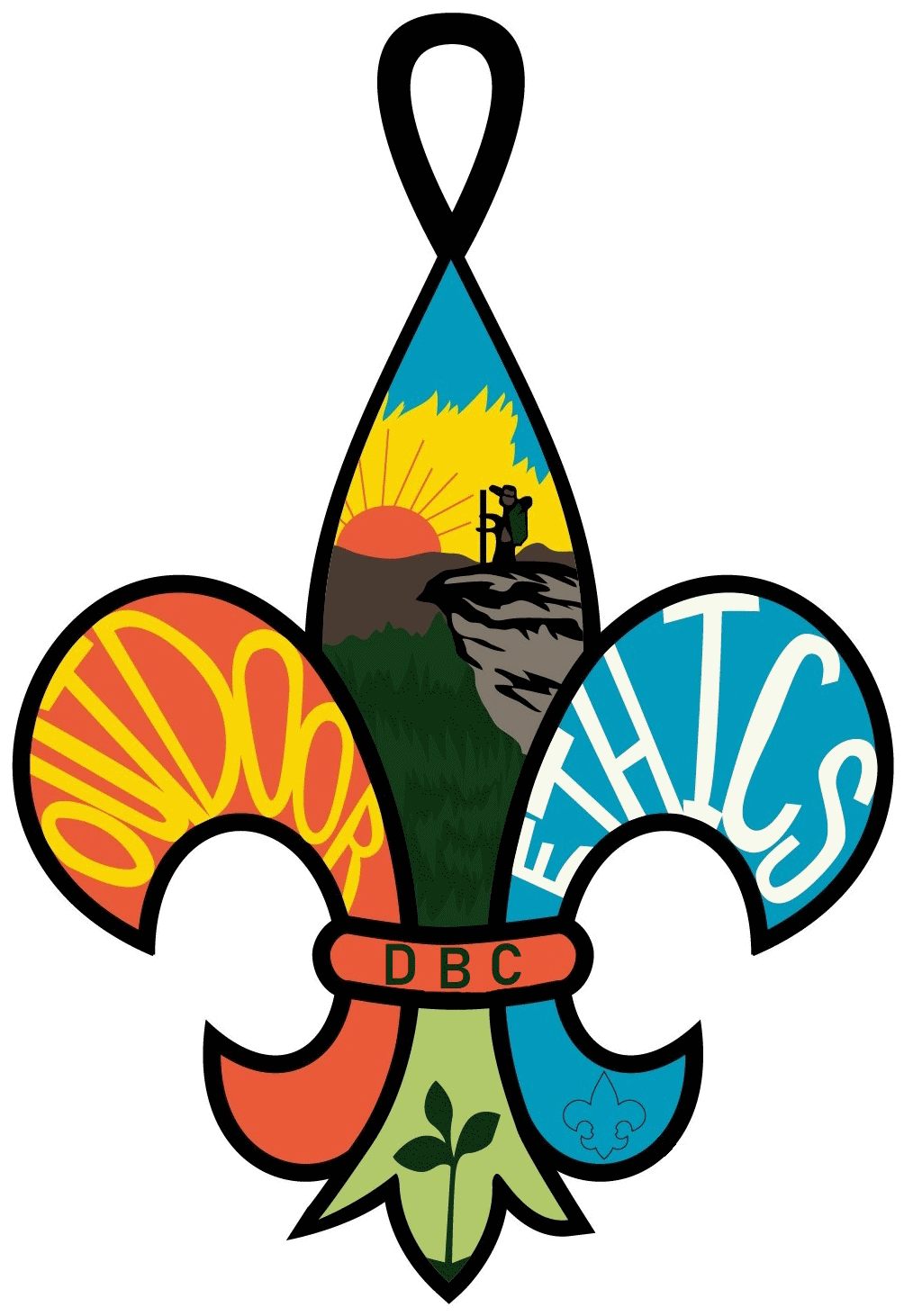
Outdoor Ethics Awareness Award (for Cub Scout Adult Leaders)
- Learn about the Outdoor Code.
- Watch the National Park Service Leave No Trace video.
- Complete the online Leave No Trace 101 Course (free).
- Participate in an Outdoor Ethics activity with a person who has taken the one of the following courses: Outdoor Ethics Awareness, Outdoor Ethics Orientation, Leave No Trace Level 1 Instructor, or Leave No Trace Level 2 Instructor.
- Download and complete the award application form using the button below and submit it by dropping it off at the front desk in Dan Beard Council Scout Achievement Center or submit electronically using the button below.

Scouts BSA
- Scouts BSA youth and adults interested in learning more about outdoor ethics and Leave No Trace should begin by exploring the Outdoor Ethics Awareness Award.
- The Outdoor Ethics Action Award challenges Scouts and Scouters to take affirmative steps to improve their outdoor skills—so that they can leave no trace and achieve the goals of the Outdoor Code.
Outdoor Ethics Awareness Award (for Scouts and Adult Leaders)
- Recite from memory and explain the meaning of the Outdoor Code.
- Watch the National Park Service Leave No Trace video.
- Complete the online Leave No Trace 101 Course (free). Print the certificate.
- Complete the online Tread Lightly! 101 Awareness Course (free). Print the certificate.
- Participate in an outdoor ethics course, workshop, or training activity facilitated by a person who has completed the Scouting America Outdoor Ethics Orientation Course or is a Scouting America Outdoor Ethics Instructor.
- Download and complete the award application form (for Award Earned, check the “Outdoor Ethics Awareness Award” option) and submit to the Dan Beard Council Scout Achievement Center in person at the front desk or submit electronically using the button below.
Outdoor Ethics Action Award (for Scouts)
- Do the following:
- Unless already completed, earn the Outdoor Ethics Awareness Award.
- Complete the Scouting America Outdoor Ethics Orientation Course.
- Explain how each of the four points of the Outdoor Code guides your actions when outdoors.
- Do the following:
- Read Chapter 7 of the Scouts Scouting America Handbook on Outdoor Ethics.
- Teach a skill related to the Outdoor Code or Leave No Trace to another Scout in your troop or another Scouting unit.
- Complete one of the following:
- Successfully complete a term as your troop Outdoor Ethics Guide.
- Participate in an outing that emphasizes the complete set of Leave No Trace or relevant Tread Lightly! principles. All members of the troop participating in the outing should use the outdoor ethics and the specific skills needed to minimize impacts from their use of the outdoors.
- Follow the Outdoor Code, Leave No Trace, and Tread Lightly! principles on three outings. Write a paragraph on each outing explaining how you followed the Outdoor Code, Leave No Trace, and Tread Lightly! Share it with your unit leader or an individual who has completed the Scouting America Outdoor Ethics Orientation Course.
- On a troop outing, help your troop on a service activity that addresses recreational impacts related to the type of outing. The project should be approved in advance by the landowner or land manager and lead to permanent or long-term improvements.
- Participate in a report at a court of honor or similar family event on the service activity in Requirement 5.
- Download and complete the award application form (for Award Earned, check the “Outdoor Ethics Action Award” option) and submit to the Dan Beard Council Scout Achievement Center in person at the front desk or submit electronically using the button below.
Scouter Outdoor Ethics Action Award (for Adult Leaders)
- Do the following:
- Earn the Outdoor Ethics Awareness Award.
- Complete the Scouting America Outdoor Ethics Orientation Course.
- Discuss with your troop how each of the four points of the Outdoor Code guides your actions when outdoors.
- Read the North American Skills & Ethics booklet to learn about the principles of Leave No Trace. Review the principles of Tread Lightly! Review Chapter 7 of the Scouts BSA Handbook and Fieldbook chapters about Leave No Trace, using stoves and campfires, hygiene and waste disposal, and traveling and camping in special environments.
- Facilitate your troop’s leadership in planning and leading an outing that emphasizes the complete set of Leave No Trace or Tread Lightly! principles. All members of the troop participating in the outing should use outdoor ethics and the specific skills to minimize impacts from their use of the outdoors.
- Help plan and participate in at least three outings where your troop can follow the Outdoor Code and practice the principles of Leave No Trace and Tread Lightly! Facilitate a discussion at the end of the outings.
- Assist your unit in arranging for a service project emphasizing outdoor ethics with a local landowner or land manager. The project must be approved by the landowner or land manager in advance. Participate in that project. The project should lead to permanent or long-term improvements.
- Make, or facilitate youth in making, a presentation at a roundtable or similar gathering about what your troop did for Requirement 4.
- Help at least three Scouts earn the youth Outdoor Ethics Action Award.
- Download and complete the award application form (for Award Earned, check the “Scouter Outdoor Ethics Action Award” option) and submit to the Dan Beard Council Scout Achievement Center in person at the front desk or submit electronically using the button below.
Venturing and Sea Scouts
- Venturers and Venturing Advisors interested in learning more about outdoor ethics and Leave No Trace should begin by exploring the Outdoor Ethics Awareness Award.
- The Outdoor Ethics Action Award challenges Venturers and Venturing Advisors to take affirmative steps to improve their outdoor skills—so that they can leave no trace and achieve the goals of the Outdoor Code.
Outdoor Ethics Awareness Award (for Venturers and Adult Leaders)
- Recite from memory and explain the meaning of the Outdoor Code.
- Watch the National Park Service Leave No Trace video.
- Complete the online Leave No Trace 101 Course (free). Print the certificate.
- Complete the online Tread Lightly! 101 Awareness Course (free). Print the certificate.
- Participate in an outdoor ethics course, workshop, or training activity facilitated by a person who has completed the Scouting America Outdoor Ethics Orientation Course or is a Scouting America Outdoor Ethics Instructor.
- Download and complete the award application form (for Award Earned, check the “Outdoor Ethics Awareness Award” option) and submit to the Dan Beard Council Scout Achievement Center in person at the front desk or submit electronically using the button below.
Outdoor Ethics Action Award (for Venturers)
- Do the following:
- Unless already completed, earn the Outdoor Ethics Awareness Award.
- Complete the Scouting America Outdoor Ethics Orientation Course.
- Explain how you live up to each of the four points of the Outdoor Code during an outing or adventure.
- Do the following:
- Read Fieldbook chapters about Leave No Trace, using stoves and campfires, hygiene and waste disposal, and traveling and camping in special environments. Review the discussion of Leave No Trace in the Ranger Guidebook, and the foreword and chapters on Conservation Aesthetic, Wilderness, and Land Ethic in A Sand County Almanac by Aldo Leopold. Explain in your own words what Leopold meant when he stated, “A thing is right when it tends to preserve the integrity, stability, and beauty of the biotic community. It is wrong when it does otherwise.”
- Lead a group approved by your unit leader in an activity that explores differing ethical viewpoints using materials from Scouting’s outdoor ethics page, Leave No Trace, or Tread Lightly!
- Complete one of the following:
- Become a Leave No Trace Trainer, Tread Lightly! TREAD Trainer, or successfully complete a term as a crew officer with responsibility for outdoor ethics training.
- Research the complete set of Leave No Trace and Tread Lightly! skills related to a planned outdoor adventure. Working with your crew leadership, prepare for the adventure, including learning the skills needed to minimize impacts. Practice the skills at least once before heading out on your adventure. While on your adventure, all members of the crew participating in the adventure should use the outdoor skills and ethics necessary to minimize impacts from their use of the outdoors.
- Follow the Outdoor Code, Leave No Trace, and Tread Lightly! principles on three outings. Develop a poster or presentation explaining how and why you followed the Outdoor Code, Leave No Trace, and Tread Lightly! Share it with a group approved by your unit leader or an individual who has completed the Outdoor Ethics Orientation Course.
- Do the following:
- Meet with a land owner or manager responsible for an outdoor recreational area or habitat that you use and/or enjoy and discuss the steps that you and your crew can take to reduce adverse impacts on the recreational ecosystem.
- With your crew leadership, help plan and participate in a campaign to reduce the adverse impacts on the recreational ecosystem. The campaign should include both service elements (e.g., land ethic—service to the land) and outdoor ethics educational components to help educate the public about how to minimize impacts to the area.
- Help plan and lead either a traditional or a social media event to educate the general public on the importance of protecting the area addressed in Requirement 5 and how they can help.
- Download and complete the award application form (for Award Earned, check the “Outdoor Ethics Action Award” option) and submit to the Dan Beard Council Scout Achievement Center in person at the front desk or submit electronically using the button below.
Scouter Outdoor Ethics Action Award (for Adult Leaders)
- Do the following:
- Earn the Outdoor Ethics Awareness Award.
- Complete the Scouting America Outdoor Ethics Orientation Course.
- Participate in a discussion with your crew of how each of the four points of the Outdoor Code guides your actions when outdoors.
- Do the following:
- Read the North American Skills & Ethics booklet to learn about the principles of Leave No Trace. Review the principles of Tread Lightly! Review Fieldbook chapters about Leave No Trace, using stoves and campfires, hygiene and waste disposal, and traveling and camping in special environments. Review the discussion of Leave No Trace in the Ranger Guidebook, and the foreword and chapters on Conservation Aesthetic, Wilderness, and Land Ethic in A Sand County Almanac by Aldo Leopold. Explain in your own words what Leopold meant when he stated, “A thing is right when it tends to preserve the integrity, stability, and beauty of the biotic community. It is wrong when it does otherwise.”
- Serve as an Advisor for your crew in an activity that explores differing ethical viewpoints using materials from Scouting’s outdoor ethics page, Leave No Trace, or Tread Lightly!
- Complete one of the following:
- Become a Leave No Trace Trainer or Tread Lightly! TREAD Trainer.
- Advise your crew’s leadership in planning and leading an outing that emphasizes the complete set of Leave No Trace or Tread Lightly! principles. All members of the crew participating in the outing should use outdoor ethics and the specific skills to minimize impacts from their use of the outdoors.
- Advise your crew’s planning and participation in at least three outings where your crew can follow the Outdoor Code and practice the principles of Leave No Trace and Tread Lightly! Participate in a discussion at the end of the outings.
- Advise your Venturers in arranging for a service project and educational campaign emphasizing outdoor ethics with a local landowner or land manager responsible for an outdoor recreational area or habitat that your crew uses and/or enjoys. The project must be approved by the land owner or manager in advance. Participate in that project. The project should lead to permanent or long-term improvements.
- Advise your Venturers in the completion of a traditional or social media event to educate the general public on the importance of protecting the area addressed in Requirement 5 and how they can help.
- Help at least three Venturers earn the youth Outdoor Ethics Action Award.
- Download and complete the award application form (for Award Earned, check the “Scouter Outdoor Ethics Action Award” option) and submit to the Dan Beard Council Scout Achievement Center in person at the front desk or submit electronically using the button below.
Additional Award Opportunities
National Outdoor Challenge Unit Award
- This award it to encourage troops to do more outdoor trips and long-term camping, have an annual program plan, have an activity with a Webelos den, conduct a Leave No Trace program, and teach outdoor-related merit badges.
- Requirement #6 for this award is, “The troop conducted at least one Leave No Trace program during the calendar year for a minimum of 50 percent of the members.”
- Return completed application form to the Dan Beard Council Scout Achievement Center in person at the front desk.
Scouting America Outdoor Ethics Distinguished Service Award
- This award is presented by the Scouting America Outdoor Ethics & Conservation Subcommittee to an individual or organization who has provided distinguished service and leadership in support of outdoor ethics in the Scouting program.
- The nominee must have provided service and leadership to outdoor ethics in the Scouting program above and beyond the basic responsibilities outlined in their job description.
- Although this award is intended to recognize service with a scope of responsibility beyond the council level, exceptional service as a Council Outdoor Ethics Advocate can be considered.
- The award should not be given solely for tenure in a given role, but effective service for multiple years in a given role should be considered.
- Contributions for more than one aspect of outdoor ethics in the Scouting program – leadership in operations (council support); training (leading/coordinating courses); program materials development; and events leadership/staffing should be given particular consideration.
Promoting Outdoor Ethics
Scouting has incorporated outdoor ethics at all program levels. In addition to the Outdoot Ethics training and awards mentioned above, there are several other opportunities for Scouts to promote Outdoor Ethics within their units.
Outdoor Ethics Guide and Advisor
- The Outdoor Ethics Guide is a youth who supports learning the skills, practices and ethics needed for responsible outdoor recreation.
- The Outdoor Ethics Guide is a troop position of responsibility that counts for the leadership requirement for Star, Life, and Eagle ranks. It was instituted in the 13th edition of the Scouts BSA Handbook. This replaces the role of the Leave No Trace trainer, which was also a Star and Life leadership position.
- Venturing crews may elect to assign the responsibility of Outdoor Ethics Guide to a member, but it is not a leadership position.
- The guide is coached by an adult advisor.
- The Outdoor Ethics Guide Handbook identifies the responsibilities of the Outdoor Ethics Guide, provides ideas on how to carry out this role, and lists resources. It also provides methods for leaders to support Scouts selected for this position and a way to evaluate success.
Outdoor Ethics Resources
Activities for Scouts
Outdoor Ethics Frequently Asked Questions (FAQ)
Please contact the Council Outdoor Ethics Advocate (Mike Wages).
The person who can facilitate the outdoor ethics activity or check the Action Award requirement is any of the following:
- A Leave No Trace Level 2 or Level 1 Instructor (formerly Master Educator or Trainer).
- A Tread Lightly! Master Tread Trainer or Tread Trainer.
- a person who has completed the BSA Leave No Trace Basics (formerly 101) course or earned the Scouting America Leave No Trace Awareness Card (Basics course equivalent).
- a person who has completed the Scouting America Outdoor Ethics Orientation course.
- any individual designated by a council outdoor ethics advocate or, in the absence of an advocate, the Scout executive or his or her designee, to facilitate the “outdoor ethics activity.”
- Many council scout shops stock the OE Awareness Award patches (SKU 618280), they can order them for you, or you can order them at www.scoutshop.org.
- Because the OE Action Award name badges (SKU 618977) are restricted and must be customized, they must be ordered through your local council scout shop. Take your completed application form.
- The award brochures give a few examples of projects.
- More info can be found in this reference.
The unit leader authorizes the Awareness and Action Awards. Ideally the requirements are checked by a leader who has taken the Leave No Trace Basics course, or by a Leave No Trace Level 1, 2, or 3 Instructor.
- The Outdoor Ethics Awareness Award is considered a temporary patch:
- The patch is worn centered on the right pocket …
- Female leaders … may wear one temporary insignia centered above the Boy Scouts of America or Venturing BSA strip (above the right pocket).
- Scouts may wear temporary patches on the back of the merit badge sash.
- The OE Action Award is a nameplate:
- … above right pocket, either above BSA strip or above interpreter strip.
- The Outdoor Ethics Action Award with the small Cub Scout emblem can be worn on the Scouts BSA uniform.
- The Scout (adult) is encouraged to earn the Scouts BSA Outdoor Ethics Action Award and add the small Scouts BSA or Venturing emblem (i.e., device pin) to the award.
